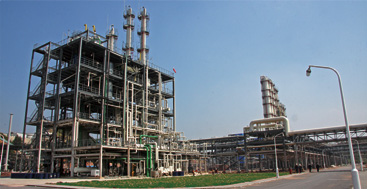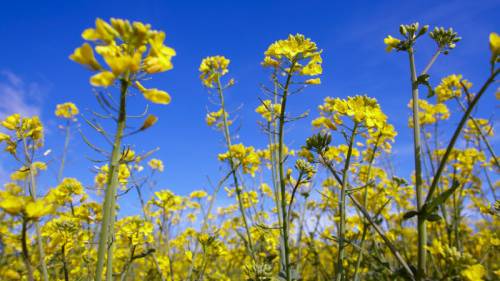China’s Glyphosate Pollution Scandal Triggers Cost Increases

In June 2013 Wynca and Jinfanda were reported to be under investigation for allegedly discharging glyphosate pollutants into the Beijing-Hangzhou Grand Canal through a chemical warehousing and transporting company.
Glyphosate prices have always been a subject of great interest in the crop protection market worldwide, and 2013 was no exception. Last year, the price of glyphosate soared, bottomed out, rebounded and then stagnated in last two quarters. Environmental regulations enacted by the Chinese government specifically targeting Chinese glyphosate producers were crucial in driving the price inflation. A major pollution scandal and subsequent investigation into the nation’s two largest producers – Wynca and Jinfanda – counterintuitively lead to a significant rebound in price in the latter half of 2013.
Since its elevation to ministerial level in 2008, the Ministry of Environmental Protection (MEP) has increasingly influenced all aspects of glyphosate production, distribution and ultimately, value. Greater regulatory powers and being on the receiving end of stinging public criticism for its poor environmental management has prompted the Ministry to take significant actions in the form of regulatory reform, increased regulatory supervision and enforcement. The Chinese glyphosate industry is overrun with small- and medium-sized producers. From a regulatory perspective the sheer volume of producers poses a huge challenge in terms of standardizing quality and ensuring regulatory compliance and traceability.
From an economic perspective, the cumulative value of glyphosate produced in China is dispersed amongst these small- and medium-sized producers. The vagaries of the Chinese market can see companies open and close in relatively short periods of time. This intrinsic instability is a major barrier to volume-demand equilibrium and ultimately price control. Compounding this situation is the severe pollution caused by the glyphosate industry. Both situations have inevitably made glyphosate producers a prime target for MEP action.
MEP’s Modus Operandi
Culling the industry’s weaker and smaller enterprises with glyphosate production shifting to larger producers will inevitably further the MEP’s control on supply and ultimately allow it to more efficiently dictate price. The MEP’s current modus operandi is to increase regulatory compliance obligations on the glyphosate industry, which if successfully implemented should effectively kill two birds with one stone.
On May 28, 2013, the Ministry issued a notice that a special measure targeting domestic glyphosate producers and formulators would be implemented from 2013 to 2015. All affected producers are “voluntarily” required to provide information and samples to their provincial environmental protection authorities and agree to on-site inspection. If the producer passes the primary review by the provincial authorities, the application and material will be submitted to the Ministry for further assessment and finally public announcement. The name of the company will be included into the “List of Environmental Compliant Glyphosate TC (PMIDA) Manufacturing Enterprises,” which will be published batch-wise and sent to other administrative departments (MIIT, MOA, MOFCOM, AQSIQ, etc.) Furthermore, the company will be subject to periodic investigation from MEP, and supervision from all sectors of the regulatory community. Violations may result in removal from the compliant manufacturers list.
Completion of the first round of preliminary reviews was targeted by Sept. 30, with the list of compliant producers published by Dec. 31, 2013. However, the release of the list has been postponed due to regulation and local capacity issues and companies’ reticence to adopt protocols and associated financial investment until they are fully defined. According to CCPIA , there are around 130 glyphosate companies in China, but only a dozen of them have completed the application for verification.
|
Sample of Companies that Applied for Verification |
|
| Company Name | Province |
| Huanxing Chemical | Anhui |
| Zhongshan Chemical | Anhui |
| Nantong Jiangshan Chemical | Jiangsu |
| Jiangnan Chemical | Jiangsu |
| Leshan Fuhuan | Sichuan |
| Wynca | Zhejiang |
| Ningxia Gerui Fine Chemical | Ningxia |
| Hubei Taisheng Chemical | Hubei |
The voluntary nature of these environmental measures has provided little incentive for companies to comply. The list of compliant producers will be circulated to other administrative departments –however, there will be little in the way of regulatory support from them. The unfortunate reality is that none of these departments have provided open support apart from non-committal statements made by industry associations and private comments by anonymous insiders.
Pollution scandals have caused the MEP to scrutinize all candidates applying for approval to ensure the integrity, quality and stringent assessment criteria are being met. If too many companies are listed, it will defeat the purpose of MEP’s actions. If only a minority of companies are approved (likely larger companies with deeper pockets), Chinese production of glyphosate will change considerably. Currently, MEP is reviewing applications together with sample materials and the first group of compliant producers should soon be released. Also, a support measure targeting glyphosate exportation based on these environmental measures will be issued this year.
Associated Regulatory Actions
In addition to the environmental measures targeting glyphosate producers and formulators, MEP has promulgated several measures on hazardous chemical management, which will have indirect impact on the whole agrochemical industry.
With the promulgation of the revised “Regulation On the Control Over Safety of Hazardous Chemicals (also known as State Council Decree 591) on Dec. 1, 2011, the affected hazchem companies are required to fulfill obligations under China’s hazardous chemical management system. In general, if a chemical substance is listed in the “Catalogue of Hazardous Chemicals” (also known as the Chinese “C&L Inventory”), stakeholders should comply with GHS, hazard classification, hazardous chemical registration, hazardous chemical licensing, and entry-exit inspection, etc.
On Sept. 26, 2013, the draft version of China’s hazardous chemicals list was published for open consultation. In the draft version of the catalogue, 139 agrochemicals were included among the 2,936 chemicals listed.
MEP is also compiling a list of Hazardous Chemicals of Priority Environmental Concern (HCPEC) by selecting chemicals from the Catalogue of Hazardous Chemicals. Producers and users of HCPECs are required to submit an environmental risk assessment (ERA) report and annual pollutant release and transfer report (PRTR) in addition to obtaining the environmental registration of hazardous chemicals from MEP.
In order to complete the ERA and PRTR reports, companies need to hire professional assessors and install necessary devices to monitor and control emissions. In some worst cases, if a company is located in an ecologically or environmentally important region, it may be forced to relocate to a other less-developed region. Last year, MEP solicited opinions on 142 HCPEC entries. Fifteen pesticides have been included in the HCPEC draft, including alachlor, acetochlor, cypermethrin and paraquat.
|
Pesticide Products included in the First Batch of the HCPEC Draft |
|||
|
No. |
Name |
Alias |
CAS No. |
|
1 |
Paraquat |
1,1 ‘- dimethyl -4,4’ – bipyridyl cation (excluding 1,1 ‘- dimethyl -4,4 ‘-bipyridine cation dichloride) ; paraquat |
4685-14-7 |
|
2 |
Paraquat water [ content of 4 % -40 %] |
4685-14-7 |
|
|
3 |
Trichlorfon [content >80%] |
Trichlorfon initial powder; trichlorfon for livestock; trichlorfon soluble powder |
52-68-6 |
|
4 |
Malathion |
Marathon; malathion; 4049 ; 0-0-dimethyl-S-[1,2-bis (ethoxy-formyloxy) ethyl] phosphorodithioate |
121-75-5 |
|
5 |
Phoxim |
Fenthion;Valaxon; phoxim |
14816-18-3 |
|
6 |
Phoxim |
Fenthion granules; Valaxon granules; phoxim granules |
14816-18-3 |
|
7 |
Tetramethylthiuram disulfide |
Tetramethyl dithiophosphoric thiuram ; accelerator TMTD; accelerator TT ; tetra-methylthiobutanoic peroxydicarbonate diamide ;anles; bis ( N , N – dimethyl methylthio acyloxy ) disulfide |
137-26-8 |
|
8 |
Ziram |
Bis (dimethyl dithiocarbamic acid ) zinc; Zinc Dimethyldithiocarbamate; accelerator P-2 ; zinc dimethyl dithiocarbamate |
137-30-4 |
|
9 |
Alachlor |
Lasso; alachlor;Methachlor |
15972-60-8 |
|
10 |
Acetochlor |
Ethyl acetochlor; N-(2-ethyl-6- methoxyphenyl)-N-ethoxymethyl-chloroacetamide |
34256-82-1 |
|
11 |
Endosulfan [content >80%] |
1,2,3,4,7,7-hexachloro-bicyclo[ 2,2,1] heptylene-(2)- bis(hydroxymethyl)-5,6-sulfite ester |
115-29-7 |
|
12 |
Endosulfan emulsion [content 2%-80%] |
115-29-7 |
|
|
13 |
Triallate [content >30%] |
Tri-allate;S-2,3,3-trichloroallyl diisopropylthiocarbamate;Avadex BW; N,N- diisopropyl thiocarbamic acid-S- 2,3,3-richloro-allyl ester |
2303-17-5 |
|
14 |
Cypermethrin |
Cymbush;Cymperator;Cypercopal |
52315-07-8 |
|
15 |
Diphenyl stannic hydroxide [content >20%] |
Haitin ; triphenyl hydroxytin |
76-87-9 |
A Look to the Future
Agrochemicals with adverse environmental profiles have inherently higher costs associated with regulatory compliance. The government is prioritizing regulatory control through all stages of a product’s life cycle, particularly its environmental impact. Both the HC and the HCPEC lists contain numerous basic chemicals which are widely used in pesticide synthesis. The compliance costs of these chemicals will be passed on to downstream users, and ultimately all Chinese agrochemical producers. If MEP stays true to its current course, we can expect an immediate change in the Chinese glyphosate industry, stabilization of supply and ultimately a significant change in glyphosate prices.





